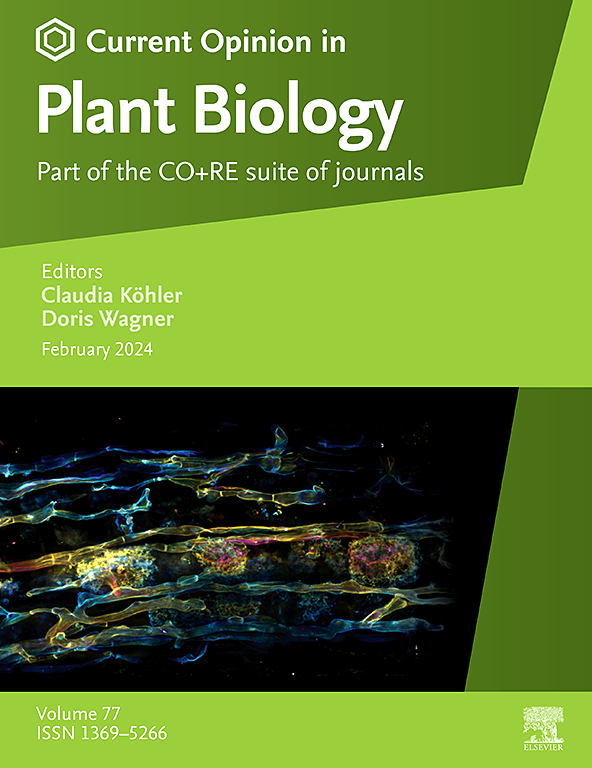From roots to nodules: regulation of organogenesis in nitrogen-fixing symbiosis
IF 7.5
2区 生物学
Q1 PLANT SCIENCES
引用次数: 0
Abstract
Plants in the nitrogen-fixing clade have evolved symbiotic root nodules to overcome nitrogen limitations in the soil. These nodules host nitrogen-fixing bacteria that convert atmospheric nitrogen into ammonia, supplying essential nutrients to the plant. Nodule formation is triggered by plant–bacteria interactions and relies on genetic adaptations, including the recruitment of existing regulatory pathways. The transcription factor NODULE INCEPTION (NIN) is a key regulator required for bacterial infection, nodule initiation, and organ differentiation. Nodule development shares key features with lateral root formation, particularly in organ initiation and early growth stages, as both arise from the same root tissue layers. This overlap raises intriguing questions about how nodules evolved distinct forms and functions. This review highlights recent discoveries in the molecular and cellular mechanisms of nodule development, especially in the Papilionoideae clade. By comparing nodules and lateral roots, we explore the regulatory changes that led to their evolutionary divergence. We highlight emerging tools—single-cell and spatial transcriptomics, and advanced imaging—that are deepening insights into nodulation, alongside phylogenomics revealing its evolutionary history.
从根到根瘤:固氮共生中器官发生的调控
固氮植物进化出共生根瘤来克服土壤中的氮限制。这些根瘤寄主固氮细菌,将大气中的氮转化为氨,为植物提供必需的营养物质。根瘤的形成是由植物与细菌的相互作用引发的,依赖于遗传适应,包括现有调控途径的招募。转录因子结节起始(NIN)是细菌感染、结节起始和器官分化所需的关键调节因子。根瘤的发育与侧根的形成具有共同的关键特征,特别是在器官起始和生长早期,因为它们都起源于相同的根组织层。这种重叠引发了关于结节如何进化出不同的形式和功能的有趣问题。本文综述了近年来在蝶科分支中,特别是在蝶瘤发育的分子和细胞机制方面的最新发现。通过比较根瘤和侧根,我们探讨了导致它们进化分化的调控变化。我们重点介绍了新兴的工具——单细胞和空间转录组学,以及先进的成像技术——这些工具正在加深对结瘤的了解,同时系统基因组学也揭示了结瘤的进化史。
本文章由计算机程序翻译,如有差异,请以英文原文为准。
求助全文
约1分钟内获得全文
求助全文
来源期刊

Current opinion in plant biology
生物-植物科学
CiteScore
16.30
自引率
3.20%
发文量
131
审稿时长
6-12 weeks
期刊介绍:
Current Opinion in Plant Biology builds on Elsevier's reputation for excellence in scientific publishing and long-standing commitment to communicating high quality reproducible research. It is part of the Current Opinion and Research (CO+RE) suite of journals. All CO+RE journals leverage the Current Opinion legacy - of editorial excellence, high-impact, and global reach - to ensure they are a widely read resource that is integral to scientists' workflow.
 求助内容:
求助内容: 应助结果提醒方式:
应助结果提醒方式:


